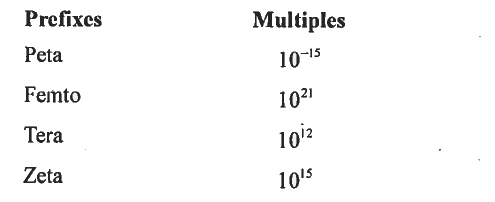Complete Solutions to TWO MARKS QUESTIONS AND ANSWERS of chapter SOME BASIC CONCEPTS OF CHEMISTRY of Class 11 book with complete answers and questions
| Class 11 | CHEMISTRY |
| Chapter | SOME BASIC CONCEPTS OF CHEMISTRY |
| SUBHASH PUBLICATION | TWO MARKS QUESTIONS AND ANSWERS |
| Number Of Questions | 38 |
| Academic Year | 2023-24 |
Write any two differentiate between a compound and a mixtures.
06:48View SolutionExplain homogenous mixtures? Give one example.
04:46View SolutionExplain heterogenous mixtures Give one example
05:28View SolutionExplain the concept of element.
05:02View SolutionGun powder is a mixture of sulphur, charcoal and potassium nitrate `(KNO_(3))`. How would you separate it into its constituent.
07:02View SolutionGive S.I. unit of the following physical quantity time, thermodynamic temperature, luminous intensity.
04:34View SolutionWrite the mathematical form for mole fraction.
06:45View SolutionDefine one mole.
03:16View SolutionMatch the following prefixes with they multiples:
 01:38View Solution
01:38View SolutionCalculate molarity and normality of the following solution. (a) HCl, (b) `H_(2)C_(2)O_(4)`
08:17View SolutionHow many significant figures are there in the following (a) `6.022 xx 10^(23)`, (b) 0.080, (c ) 8.002
05:12View SolutionExpress 150 pounds in SI units
02:45View SolutionWrite 325 g and 0.0010 g in exponential notation.
03:32View SolutionDefine law of conservation of mass.
04:37View SolutionExplain law of constant composition with suitable example.
06:01View SolutionState Gay Lussac's law.
02:05View SolutionCompute the mass of one molecule and the molecular mass of `C_(6)H_(6)` (benzene). (At mass of C=12, H=1 u).
03:51View SolutionAn organometallic compound on analysis was found to contain, `C = 64.4%, H= 5.5%` and Fe = 29.9%. Determine its empricial formula. (At. Mass of Fe = 56 u).
08:00View Solution4 g of copper chloride on analysis was founded to contain 1.890 g of copper (Cu) and 2.110 g of chlorine (Cl). What is the empirical formula of copper chloride? [At. Mass of Cu= 63.5 u, Cl = 35.5 u].
05:29View SolutionCalculate the number of grams of oxygen in 0.10 mol of `Na_(2)CO_(3).10H_(2)O`.
02:44View SolutionHow many grams of `Cl_(2)` are required to completely react with 0.4 g of `H_(2)` to yield HCl? Also calculate the amount of HCl formed.
05:34View SolutionConc. HCl is `38%` HCl by mass. What is the molarity of this solution is d=1.19 g `cm^(-3)`? What volume of conc. HCl is required to make 1.00 L of 0.10 M HCl?
08:48View SolutionState Gay Lussac's law.
02:05View SolutionCalculate the volume of `O_(2)` at STP liberated by heating 12.25 g of `KCIO_(3)`. (At. Wt. of K=39, Cl=35.5, O=16 u)
07:55View Solution1 M solution of `NaNO_(3)` has density 1.25 g `cm^(-3)`. Calculate its molarity. (Mol. Weight of `NaNO_(3) = 85 g mol^(-1))`.
06:37View SolutionExplain how compounds differ from elements? Give two differences.
04:05View SolutionExplain how mixture differs from pure substances? Give 2 difference.
03:20View SolutionClassify each of the following as pure substances or mixture, (a) Ethyl alcohol,(b) Oxygen, ( c) Blood, (d) Carbon, (e) Steel, (f) Distilled water.
04:08View SolutionDefine avogadro's law.
04:21View SolutionDiscuss average atomic mass with an example.
08:21View SolutionCalculate the molecular mass of water `(H_(2)O)` and water `(O_(2))` and oxygen `(O_(2))`.
03:31View SolutionDefine Avogadro constant `(N_(A))`.
04:35View SolutionDefine limiting reagent.
05:05View SolutionWhat is mass percent `(W/W%)`
03:10View SolutionWhat is mole fraction (X)
03:03View SolutionWrite mathematical form for A and B substance of mole fraction.
04:23View SolutionWhat is molarity (m).
04:01View SolutionWhat is molarity (m).
04:01View Solution
TWO MARKS QUESTIONS AND ANSWERS questions and complete solutions for chapter SOME BASIC CONCEPTS OF CHEMISTRY of JEEVITH PUBLICATIONS CHEMISTRY (KANNADA ENGLISH) of Class 11
